Looking back at the 1989 Central Park jogger rape case that led to 5 teens' conviction, later vacated
Five teenagers were arrested and charged with assaulting Trisha Meili.
The city of New York was already seething with racial and socioeconomic tensions in April 1989 when 911 calls began coming in that a group of black and Hispanic teenagers were terrorizing people in Central Park.
A new drug called crack was leaving whole communities decimated, while in other parts of the city, the lavish, money-making culture of Wall Street was booming.
"There's turmoil, and there's greed, and there's poverty," recalled Jelani Cobb, a staff writer for the New Yorker. "And there's fear and violence, and it's all wrapped up in one big, tumultuous, single city between the East and Hudson Rivers."
On the night of April 19, 1989, police were scrambling to respond to calls about 30 to 40 teens who were harassing people in the park.
"Basically we took over that whole park, just walked down the street and beat people up," said Tony Montalvo, who said he was in the group that night. "We [were] walking on the road towards downtown and somebody recognized an older man walking across the road, and he had a bag in his hand. And then a bunch, you know, other kids went ... punching him, kicking him and all that."
Watch the full story on "20/20" Friday, May 24, at 9 p.m. ET on ABC.
Patricia and Gerry Malone were making their way through the park on a high-speed tandem bike when they encountered the group.
"We saw this whole line of kids," Patricia Malone recalled. "I remember thinking, 'I wonder why they're here so late?'"
Montalvo said that when the group saw the Malones, he heard a person say, "Get them."
Gerry Malone said the group jumped across the road and came for him and his wife.
"It was actually terrifying," Patricia Malone said. "They were ripping at my arms and legs and clothing. As a woman, you immediately wonder what's going to happen."
Montalvo said the group began chasing the bike, but the Malones eventually got away.
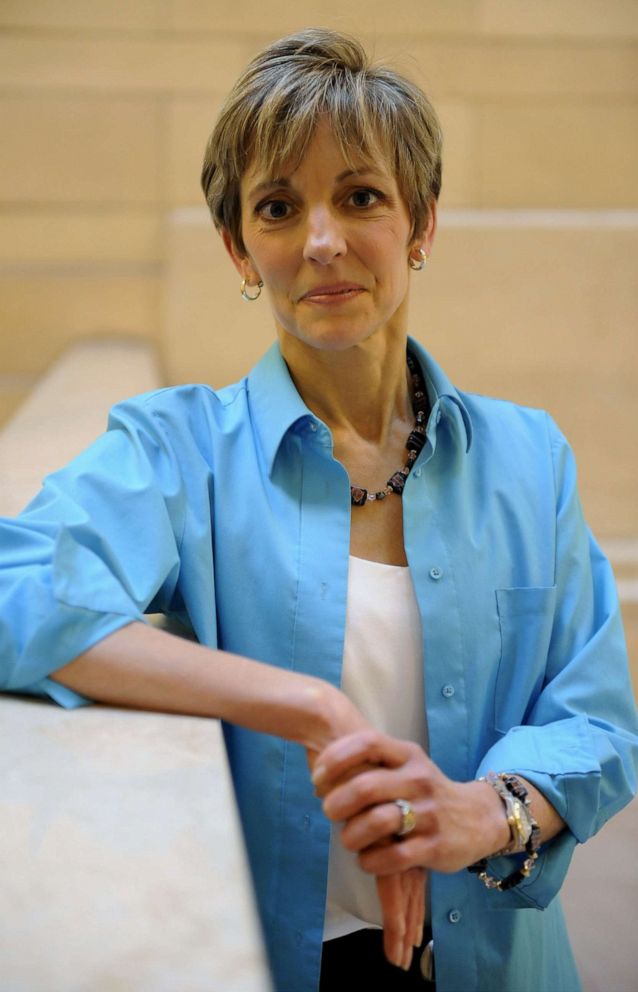
Eric Reynolds, a former New York City detective who was on duty in the park that night, called the night "chaotic" with all the 911 calls.
"People were punched in the face and pulled off their bicycles and robbed of their watches," said former newspaper columnist Ken Auletta. "It was kind of a crazy series of incidents that took place in the park."
One of the last victims in Central Park, John Loughlin, a former Marine and teacher, was beaten with a metal pipe in the head.
"The victim looked like his head got dunked in a bucket of blood, he was beaten so badly," Reynolds said.
Reynolds said that eventually he and his partner came across a group of 20 or 30 teenagers as they were leaving the park. They chased them and ended up arresting a number of teens, including Kevin Richardson and Raymond Santana.
"I lived across the street from the park, actually on 110th in upper Manhattan," Richardson said during a 2013 TimesTalk. "That Wednesday night, it was Easter vacation. ... We could hang out a little later 'cause it was no school till Monday. ... I seen a group of kids entering the park. At the time, I followed."
A woman’s body is found
As some of the teenagers were being questioned by police, the body of a white woman was found in the park by two men making their way from the west side to the east side.
"They thought it was a man's body, and then they heard moaning," recalled Mike Sheehan, a former New York City detective.
Quickly, the police's investigation changed.
Reynolds said that he and his partner were sent back out by detectives to pick up other teens, including Yusef Salaam, Korey Wise and Antron McCray.
As he was coming out of a local restaurant April 19, Wise said, he'd run into Salaam.
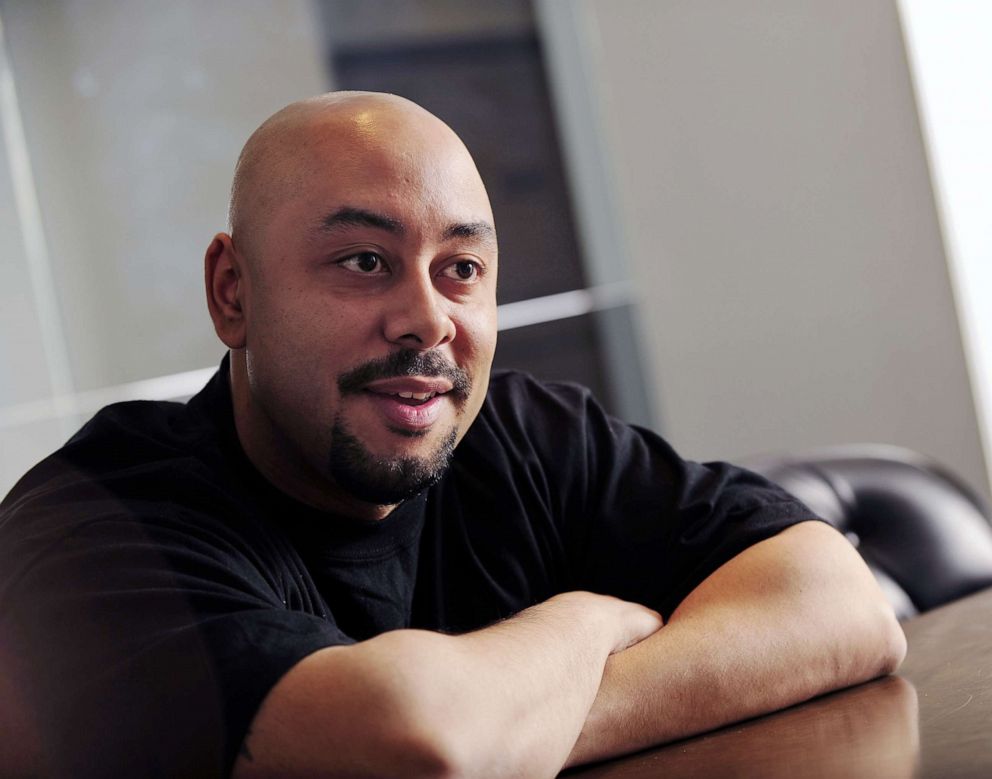
"He asked me about hanging out with him. And that was it," Wise said in 2013.
"You go from hanging out with friends, thinking that you're going to, you know, go skateboarding in the park or walk around the lake to mayhem," Salaam said during the TimesTalk. "It’s almost like moths being drawn to fire. A child can be a witness to something without being a participant in something."
"I remember violence," McCray said in 2013. "It was real hectic. It was crazy. You standing there and watching somebody get beat. It was unreal."
The woman, later identified as Trisha Meili, had been taking her nightly jog through the park after work when she was raped, brutally beaten and left barely alive in a ravine. She was hospitalized in extremely critical condition, police said, and there was a possibility that she would die.
"I will never forget that day," said plastic surgeon Jane Haher. "I have seen traumatized patients many, many times. But I have never seen somebody, like, destroyed."
Meili, who was in a coma for a week, had suffered several skull fractures and deep lacerations. Her left eye socket had been crushed.
By April 20, 1989, of the approximately 50 teenagers questioned in the Central Park attacks, Richardson, Salaam, Santana, McCray and Wise were in police custody and being questioned in the Meili case.
"We had all these kids now in custody, and they were all starting to talk and give stories about what happened," Sheehan said.
Wise said during a TimesTalk in April 2013 that his mind felt like "scrambled eggs" as he talked to police.
"I really didn’t know what was going on," Wise said. "I just wanted to get the hell home."
"If you take an individual that's 15 years old and you put that individual in a room by themselves with two to four to six officers -- some of them wanting to attack you -- that individual would be terrified," Salaam said in a 2002 interview. "It could be almost tantamount to someone having a gun to your head."
"I didn’t know who did it," McCray said during the TimesTalk. "I just know I didn't do it, so I was just trying to get everybody back. I was just blaming whoever. That’s how it went. That’s how it went for me."
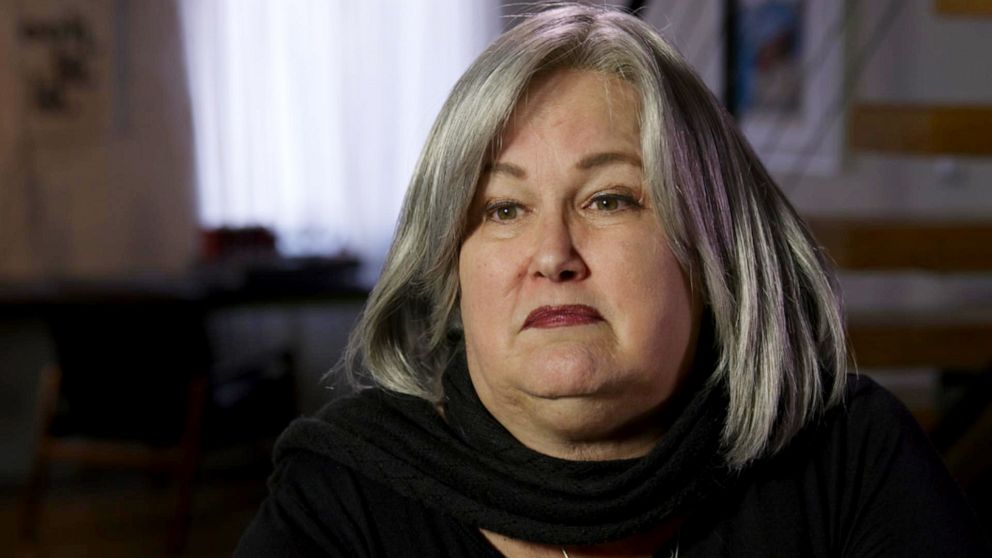
Sheehan told ABC News that there was no coercion by the police in the teenagers' interrogations.
"How do you coerce somebody when he's sitting there with their parents?" he said.
"None of those detectives of their caliber would have to resort to walking anyone into a confession. Their words are their words," said former New York City police captain Sal Blando. "We don't put words in people's mouths."
A total of 10 people were charged and either convicted or pleaded guilty to various crimes in the park.
Richardson, Salaam, Santana, Wise and McCray eventually became known as "the Central Park Five." Each teenager, except for Salaam, either implicated himself or one of the others, on video, in the attack on Meili.
"This was my first rape. This...I never did this before," Wise said in his confession tape. "This will be the last time doing it."
"They minimized their own involvement in it by saying, 'But he did more than I did,'" said Linda Fairstein, the former chief in the district attorney's office. "According to the law of New York, by saying, 'I didn't do the rape. I just held her down,' that is as guilty, under the law, as if saying, 'I climbed on top of a woman and raped her.' ... Those young men admitted to some part, what we call 'acting in concert,' in the law, of either striking Trisha to bring her down to enable the sexual assault, [or] holding an arm or a leg."
Click here to access the City of New York website with documents and videos from the trials.
Prosecutors have problems
Prosecutors had a few problems, though. There was no DNA and not much evidence linking any of the teenagers to the attack, and not all of the details the teenagers gave were factual.
McCray had told authorities that the jogger was wearing blue shorts, but Meili was wearing tights. He also said that she was jogging around a reservoir, when the reservoir was more than a mile and a half away from where her body was found.
As Meili woke from her coma, the media and the public clamored for details from her doctors.
"She woke up and looked around and saw the flowers and said, you know, "Holy smoke, what's going on?'" said surgeon Dr. Robert Kurtz.
The Central Park Five were charged by the district attorney's office. Another teenager named Steve Lopez decided to plead to a lesser charge in her attack when he was offered a deal. The five suspects had just been starting their high school careers. They came from strong, supportive families. None of them had a criminal record at the time.
"This was one of the most compelling stories that New York could see, that a reporter could cover," said former journalist Tim Minton. "It took politics, power, rape, racial politics, controversy."
In August 1990, 14 months after the crime had been committed, the first three suspects -- Santana, Salaam and McCray -- were tried in court. The teenagers' statements were the most important evidence, said Tim Clements, who helped prosecute the case.
"This was like the New York Yankees playing against your high school baseball team. You had Elizabeth Lederer and of course Robert Morgenthau," Minton said. "On the other side, the defense attorneys in this case were outclassed, out-strategized and outlived in terms of their ability to survive a case like this."
This was one of the most compelling stories that New York could see, that a reporter could cover.
In court, Minton said, the jurors were "riveted" as they watched the tapes of the teenagers' interrogations.
"The looks on the jurors' faces when they watched those videotapes told a devastating story for the defense. You could see it. The jurors were engaged," he said. "They nodded their heads in some cases. They were disgusted."
In one tape, prosecutor Elizabeth Lederer questioned Raymond Santana:
Lederer: What happened to her when she was on the ground?
Santana: Lopez came and he was holding her by her arms. He pinned her arms with his knees and then he covered her mouth with his hand and then he sees her start screaming so he started smacking her.
Meili even testified on the witness stand in the trial, despite not remembering the attack.
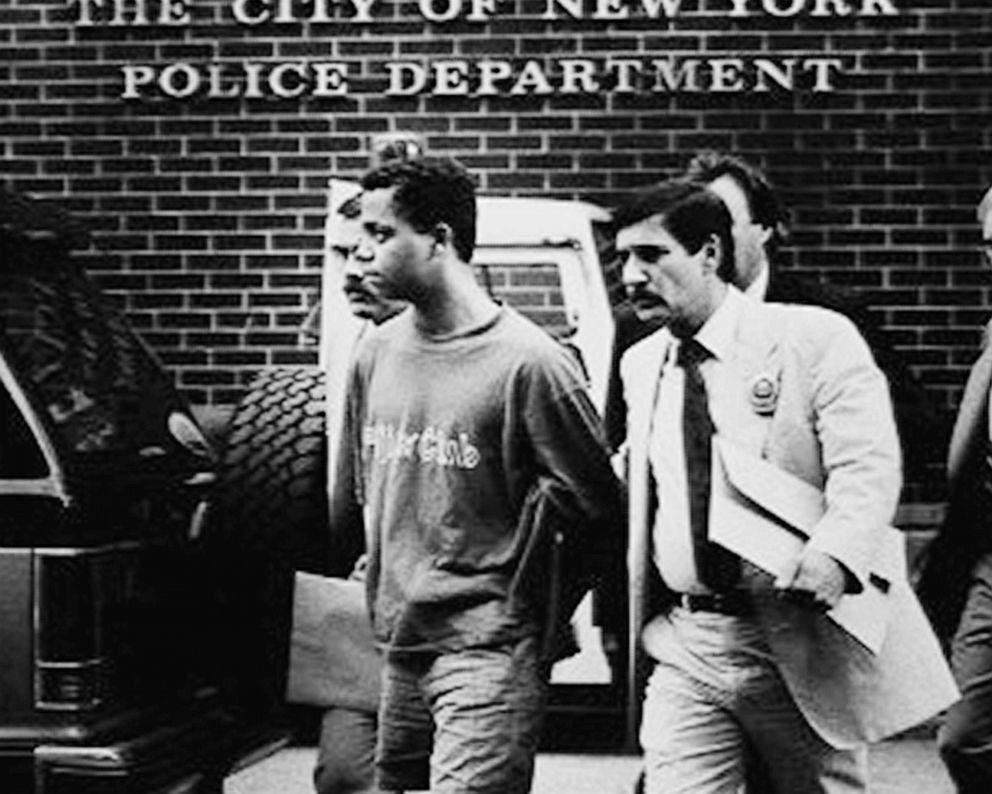
"I thought, I know I have no memory, but I wanted people to know the condition that I had been left in," she told ABC News' "20/20."
Eric Roach, one of the jurors, said in a 2002 interview that the prosecution had played on the jury's emotions.
"They wanted you to see her with the slurred speech, the wound to her head. It was powerful," he said. "It was."
In August 1990, after 10 days of deliberations, Salaam, Santana and McCray, all 16 years old at the time, were convicted of rape, assault and robbery in the attack on Meili.
"They didn’t care about the DNA. They didn’t care about who did this to this woman," Salaam's mother, Sharonne Salaam, said in a 2002 interview. "They wanted to get this case off the books. And these were the scapegoats, lambs led to the slaughter."
Richardson and Wise were tried separately from the others. The prosecution followed a similar strategy to the first trial, playing the teenagers' confessions for the court. However Minton said the jury struggled with Wise's confessions because he had given two statements that appeared to contradict each other.
Initially there was this exchange:
Lederer: Who was the first person to have sex with her?
Wise: It was Raymond.
But later this exchange took place:
Lederer: Who was the first one who had sex with her?
Wise: It was Steve.
A juror expresses regret
Victoria Bryers, one of the jurors in the first trial, told ABC News' "20/20" that she had not believed at the time of the trial that Wise was involved in the attack, but that she had gone along with the other jurors.
"Korey Wise's confession didn't make any sense compared to anything else. It just didn't line up," Bryers said. "Several of the jurors kept at me and at me. They pushed me to go to the other direction and I wished to God I had just hung the jury on that. And that's, that’s been my biggest regret for 30 years."
In December 1990, Wise was found guilty of sexual abuse, first degree assault and riot. Richardson was also found guilty on all charges.
"When they read the verdict, it was like the worst day of our lives. It was like somebody just stabbing you in the heart," said Angela Cuffee, Richardson's sister, in a 2002 interview. "And the haunting image that I will never forget is of my brother, looking at us, crying. We were in shock."
McCray, Richardson, Santana and Salaam got five to 10 years in prison as juveniles. Wise was sentenced to five to 15 as an adult.
With the trials over, Meili -- believing her attackers were behind bars -- ran the New York City Marathon in 1995. A few years after that, some of the teenagers who'd been convicted in her attack began being released from prison. By then, they were in their 20s.
Thirteen years after the Central Park attack, in 2002, with four of the Central Park Five out of prison, a convicted serial rapist by the name of Matias Reyes came forward to say that he was Meili's sole attacker.
I wished to God I had just hung the jury on that. And that's, that’s been my biggest regret for 30 years.
He had met Wise earlier when they were both at New York's Rikers Island jail, and then later had seen him at a prison upstate. Reyes, who was serving 33 years to life for a murder-rape conviction, reached out to police, who were able to match his DNA to the DNA at the Central Park crime scene.
"When I first heard that they got the matching DNA with Reyes, I was like, 'Oh, that's great. We got the final guy, the guy who had gotten away originally in 1989,'" said Reynolds, the former New York police officer. "But then he turned around and said that he did it by himself."
Reyes also knew some information about Meili and the crime that had never been released, and that only the person who had been there could know.
"I was alone that night. Anytime I went out to do any of my crimes or anything like that, I was always alone," he told police on his confession tape. "I saw the lady. She was jogging. I went behind her and I was zig-zagging back and forth from one side of the road to the horse bridal paths, sometimes walking, sometimes jogging, just giving her enough distance, you know. ... I struck her over her head with the branch and she fell forward. I grabbed her to drag her inside to the bushes. As I dragged her in there, I remember that I took off her clothes. ... I asked her, 'Can she give me the address to her house ‘cause I found some keys in the little black bag. ... One of those bags that joggers sometimes wear. ... She didn’t say anything to me. So I guess, I think that escalated the anger or whatever. I know the beating proceeded from there. ... I thought I left her for dead."
Reyes, who had been given the nickname "East Side Rapist" for a rash of violent rapes along Madison Avenue in the spring and summer of 1989, had also attacked a woman in the park on April 17 prior to -- and not far from the location of -- the April 19 attack on Meili.
"The police officer investigating that (the April 17 attack) had his DNA marker in that file," said Natalie Byfield, a professor and former reporter.
But Sheehan of the NYPD said that his team in the homicide department had not been made aware of the April 17 rape.
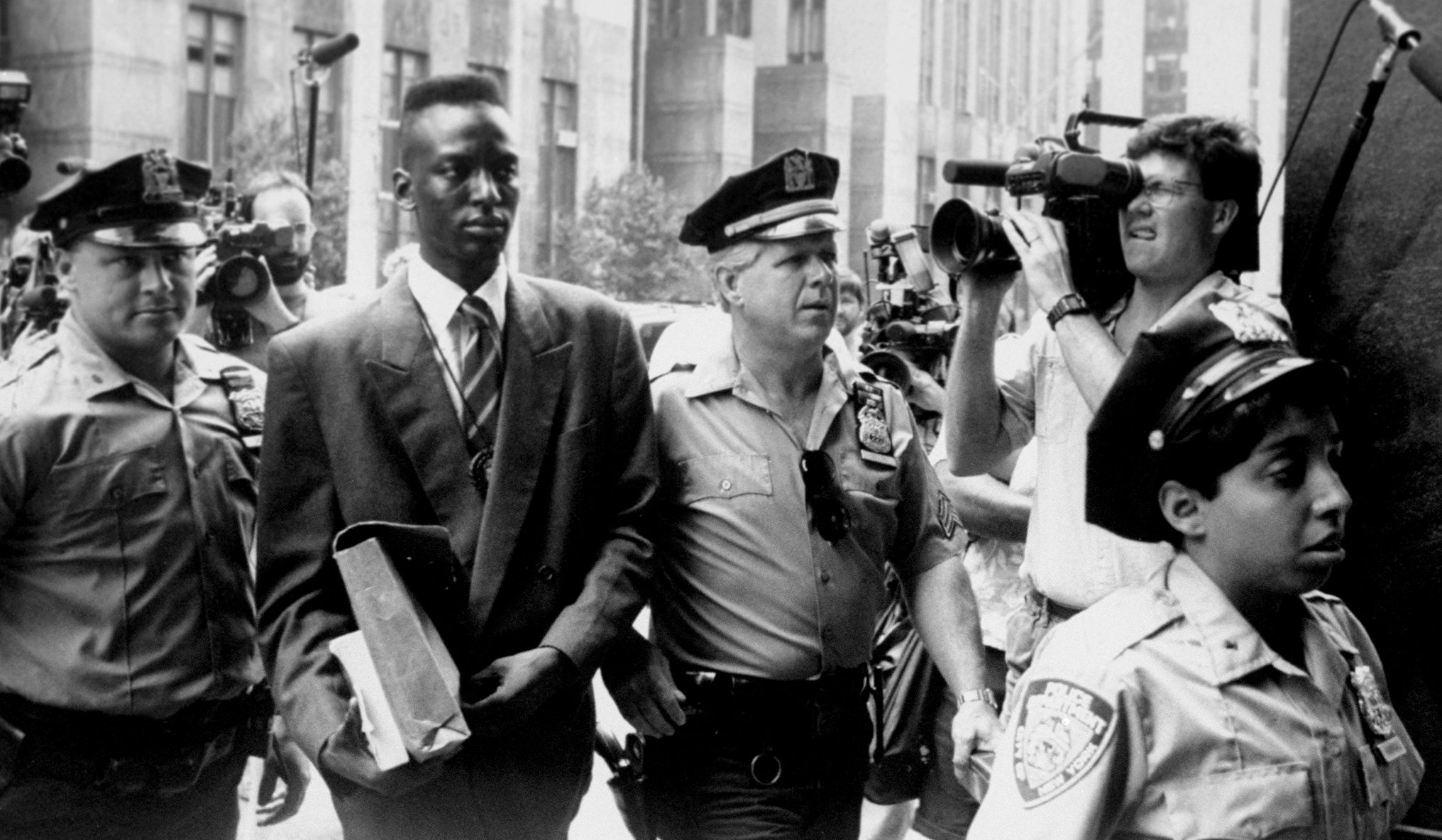
"The rape on April 17, we knew nothing about. None of us in homicide knew anything about April 17. Sex crimes dealt with rapes. There's no sharing of information. Maybe there is today, but back then they had a full caseload. Ours was ridiculous," he said.
In 2002, District Attorney Robert Morgenthau withdrew all charges against the Central Park Five, and their convictions were vacated. Wise, who was still in prison at the time, was released early.
Neither the police and prosecutors who worked the Central Park case, nor Meili, believed that Reyes had committed the crime by himself.
"We felt that the most likely scenario involved an attack by a large number of people, and then she was dragged into the woods," said Michael Armstrong, who was hired in 2002 by the police department to look into how its office had investigated the Central Park case. "And then Reyes, either by himself or perhaps with others, practically killed her and committed the horrendous rape."
Armstrong, who released his findings in what has become known as the "Armstrong Report," concluded that police had not engaged in any misconduct to make the teenagers talk during their interrogation tapes.
"The difficulty I have with the Armstrong Report is that [it says] they had 'something to do with it,'" said activist Al Sharpton. "They weren't convicted of 'something.' They were convicted of the rape and the attack. So it seems to me like you just want to make something stick to justify the hysteria."
The Central Park Five sues
The Central Park Five sued the city in 2003, but Mayor Michael Bloomberg refused to settle. The lawsuit dragged on for a decade.
In 2003, Sarah Burns, a filmmaker, joined forces with her father, documentarian Ken Burns, and David McMahon, to produce a film on the Central Park Five. It was released in 2013.

"When the documentary comes out, it succeeds in not just raising what reasonable [people] would consider doubt as to the guilt of the Central Park Five," said Minton, the former reporter. "It raises the possibility that they’re actually innocent."
Richardson said in the 2013 TimesTalk that the movie changed their lives.
"In '89 it was such a media frenzy that we were scared to speak. But now we take the 'Central Park Five' and we wear it as a badge," he said. "And people see us for who we are."
Fairstein of the district attorney's office said the film had been made while police and prosecutors were not allowed to speak publicly because of a gag order. Reynolds, the former New York City detective, said the Burnses had done the city a disservice with the making of the movie.
"They perpetrated this lie," Reynolds said. "They created this myth of these kids that were railroaded, and that never happened."
When Bill de Blasio became mayor, the city finally settled with the Central Park Five in 2014. Most of the defendants received $7 million apiece. Wise received $13 million. The city of New York, however, stuck by its police and prosecutors, not admitting to any wrongdoing by either. Neither Meili nor authorities supported the city's decision to settle.
"It’s really disheartening and disgraceful," Sheehan said. "Anyone who is out there saying that they’re innocent and believing them, shame on them."
Meili now works with survivors of brain injuries, sexual assault, and other kinds of trauma, to help them gain the strength to move forward in their lives. She also advocates for the improvement of rape kits.
And the Central Park Five now travel the country, speaking on college campuses and appearing on TV, radio and podcasts.




